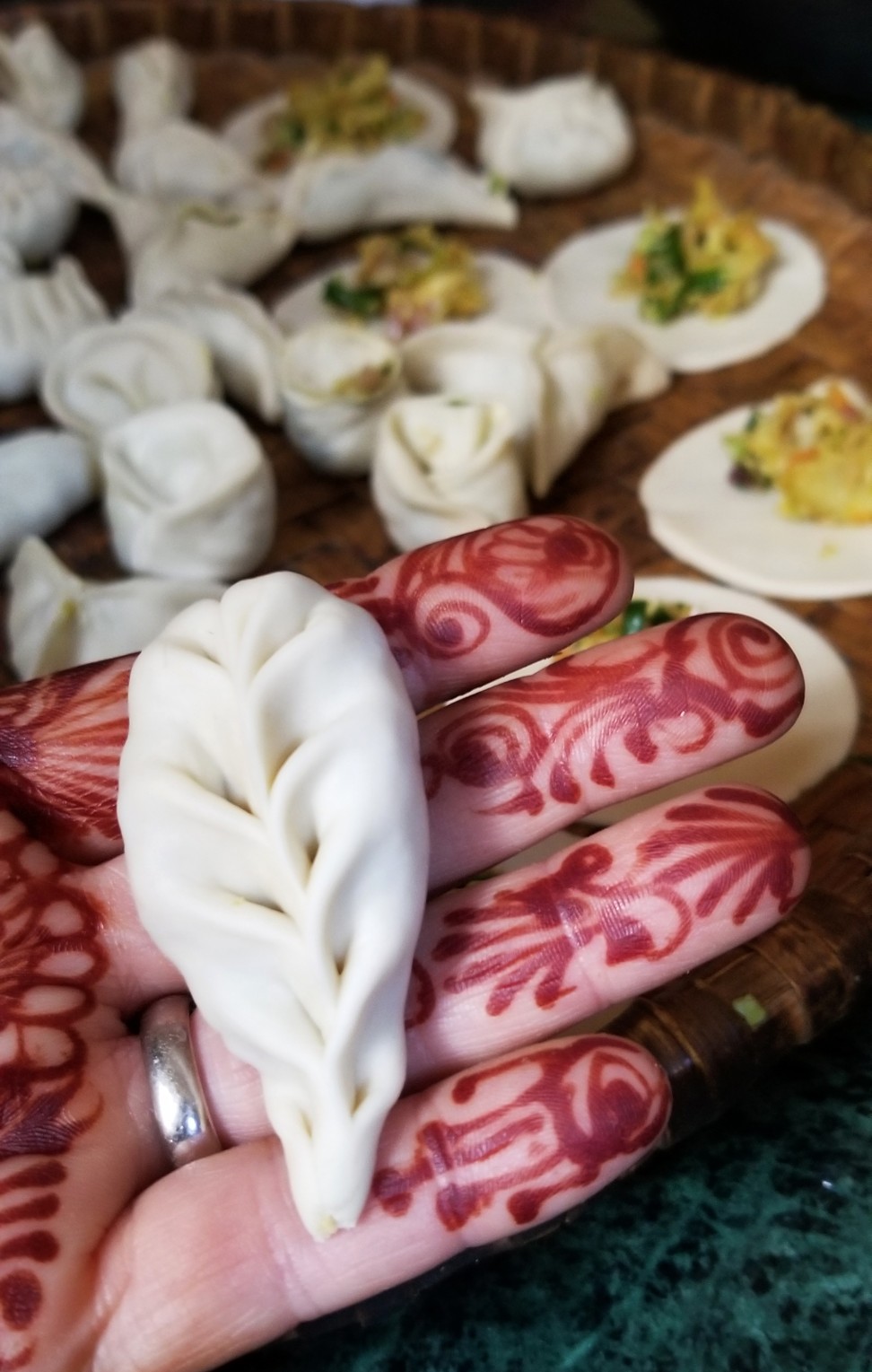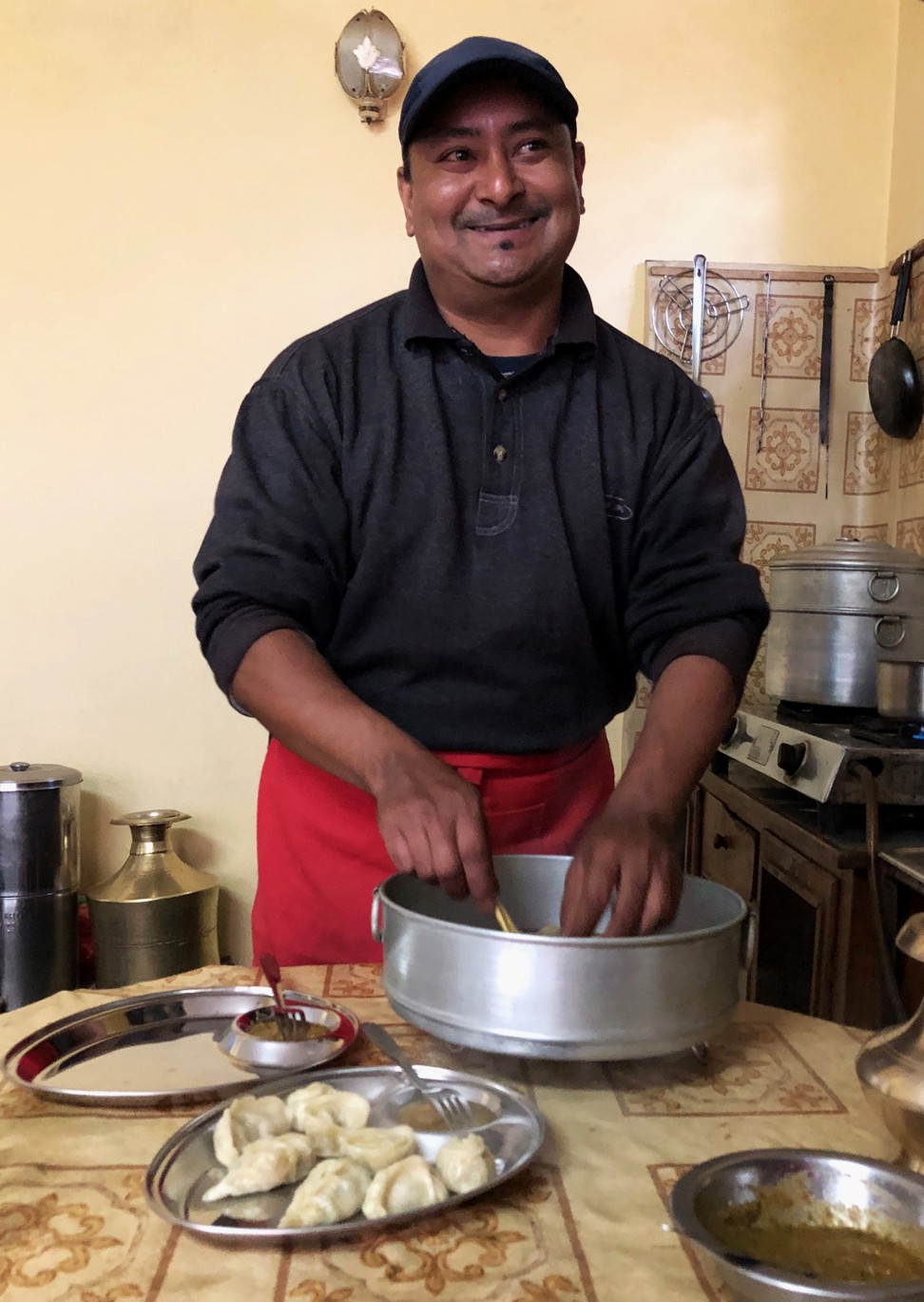
Learn to make classic momo like a pro in Kathmandu with Backstreet Academy’s home cooks
- Momo are small steamed dumplings, popular in Nepal, Tibet and North India
- They are found all over Kathmandu and tourists can learn to make them at home cooking schools in the city
Dil Kumari Maharjan looked at my misshapen dumpling and said with a deceptive smile, “You made an American momo.”
That was not a compliment.
Inside Singapore’s private kitchens, where chefs share their food, culture and personalities
During a week in Kathmandu, I ate momo like a Nepalese, causing platefuls of the popular snack food to vanish with the wave of a fork – not that I would ever use a utensil. According to proper momo etiquette, you must remove the middleman and dig right in with your hands.
The dumplings are eaten throughout South Asia and particularly in Nepal, which adopted the dish from Tibet. Several chain restaurants in Kathmandu, such as Everest Momo and Magic Momo, specialise in the anytime food. Momo appear on the menus at the five-star Hotel Yak and Yeti and at Jazz Upstairs, a live music venue. They show up on wedding buffet lines and inspire eponymous festivals. Friends throw momo parties.

I tasted my first steamed momo at a place called Chinese Kitchen and Burger House and Fast Food, near Patan Durbar Square. I paid less than US$1 for 10 veggie dumplings. After that inaugural sampling, many more momo followed, including several dozen made by a pair of inexpert – yes, American – hands.
Dil and her husband, Purna teach the art of momo making at their Kathmandu home. The couple work with Backstreet Academy, the Nepal-based organisation that pairs skilled locals with visitors seeking an intimate cultural experience. The peer-to-peer site arranges classes and tours in 25 cities in 10 Asian countries, including Laos, Vietnam, Thailand and Indonesia.
Buddhists and beef, kimchi and caviar: a culinary trip through South Korea
In Kathmandu, experts instruct novices on how to drape a sari, paint a Buddhist thangka and sew a laptop case out of Dhaka cloth. The city food tours lead guests to the best street stalls or take them out for a traditional Nepalese breakfast of sel roti, a doughnut-like pastry; malpua, an Indian pancake; gwaramari, a round bread; and bottomless cups of chai.
Home cooks also invite visitors into their kitchens. Ruby Shrestha, a stay-at-home mom who knits for extra income, teaches her students to make dal bhat (lentil soup and rice), the unofficial dish of Nepal. Nima Sherpa, a housewife enjoying her empty nest years, whips up vegetable curry and sel roti. Purna, whose online bio says he wants to use his cooking skills to avert poverty and provide a good education for his son, runs two courses: ‘Cooking Momos with Home Chefs: Nepal’s Favourite Dish’ and ‘Kathmandu Fear Factor Challenge: An Inside(r) Way to Eating Buffalo’. The edible anatomy lesson includes blood, testicles, brain, lungs, liver, spinal cord and eyeballs.

My friend Julie and I opted for the more benevolent momo, which is offensive to none but the tight waistband. The dumplings come in several varieties: chicken, vegetable and buffalo, the most popular filling. Our interpreter, Aarjoo, told us that people often consume about 15 momo per outing, though the snack can easily cross the line into bingeing. Purna said their 14-year-old son once tossed back 25 medium-size buffalo momo. Thankfully, he was at school during our noon class, so I didn’t have to guard the goods.
The Maharjans live in an urban neighbourhood with droopy power lines, bike riding fruit vendors and tailors who stitch the North Face logo onto outerwear. Aarjoo met us at Bajeko Sekuwa, a restaurant chain that, of course, serves momo. We followed her through the chaotic streets to a two-storey concrete house with a vegetable garden in the front yard. We greeted a woman washing a small child (the couple’s tenants) and climbed the stairs to our classroom. Shoes off, apron on, and don’t even touch a speck of coriander till you wash your hands.
Purna started with an overview of the ingredients, which he had chopped up in advance and arrayed at our work station, a low coffee table inches from a couch. A large vessel contained carrots, soybeans, cabbage, bell peppers, spring onions and boiled potatoes. (We requested vegan momo, but vegetarians can add paneer, too.) Seasonings included salt, masala, chilli powder, ginger and garlic paste. There was also mustard oil in a recycled plastic water bottle; whole tomatoes, coriander and parsley for the achar dipping sauce; and a mound of wheat flour for the dough.
Our first task was to mix and mash the vegetables with our fingers. While we worked, the couple told us about their lives. Purna, who is 38 years old, sells incense and has been an instructor with Backstreet for six years. In 2014, he won the Backstreet Travellers’ “favourite host” award, an honour that hangs by the front door. Dil, 36, works in handicrafts. Their parents arranged their marriage, still a common practice in Nepal. As we chatted, the gleeful sounds of playing schoolchildren and a wedding procession wafted through the open window.
After Purna kneaded the dough, we formed it into small balls and flattened them into sand dollars. We rolled out the little patties, receiving critiques from Purna: “too thin” or “too long.” We used a round cutter to create perfect circles and filled the discs with the veggie blend.
And now, the hard part.
Hong Kong ‘Food God’ Chua Lam slams hotpot for lacking cultural significance; rage boils over
Purna placed five dumpling shapes before us. We oohed and aahed in admiration. They were so artfully crafted that each one deserved its own rotating pedestal. He first showed how to make the round momo, which usually contains buffalo meat. Thirteen pinches and twist. I lost count after seven and squashed and contorted the dough instead. For the fishtail braid-style, he pinched the top and then plaited. Left, right, pinch; left, right, pinch – till the final closure at the tip. The Chinese dumpling was easier: create a taco and fold the edges over until they kiss. There was also a momo that resembled hamantaschen and one with pleats that culminated in a mohawk.
I flitted between the fishtail and round designs, with varying success.
“C, B-plus, B-plus, A – OK,” Purna said, as I held each one up.
The A was a pity grade, but I did not protest.
Purna briefly left us to make the sauce. We took a break from folding to join him by the mortar and pestle on the floor. He pulverised the skinned tomatoes, garlic, coriander, Sichuan pepper, soybean powers, salt and a dash of chilli powder – because I am heat intolerant. He dropped our dumplings into the steamer, where they would cook for 10 minutes.
Purna poured us a glass of rice wine that he had fermented for a month and plated the dumplings. The American- and Nepalese-made momo sat side by side, like friends around a coffee table.
“The look doesn’t matter,” he said, as we popped momo together. “They all taste the same.”
Backstreet Academy
backstreetacademy.com
The organisation recruits skilled locals to lead tours and teach classes in Kathmandu. The Cooking Momos with Home Chefs course is held daily, with several time slots available per day. Price is US$19 per person, plus a 7 per cent service fee. The company adds a US$5 surcharge if the number of participants does not meet the minimum requirement. An interpreter will meet the students at a predetermined spot and walk them to the instructor’s home.
welcomenepal.com

